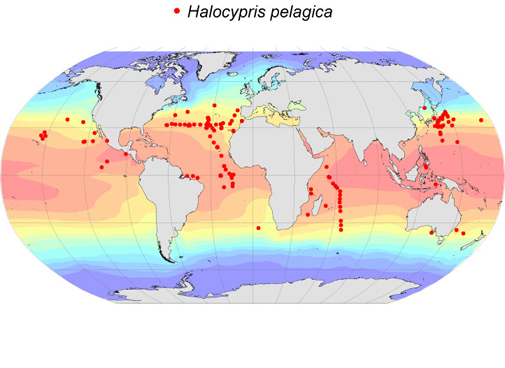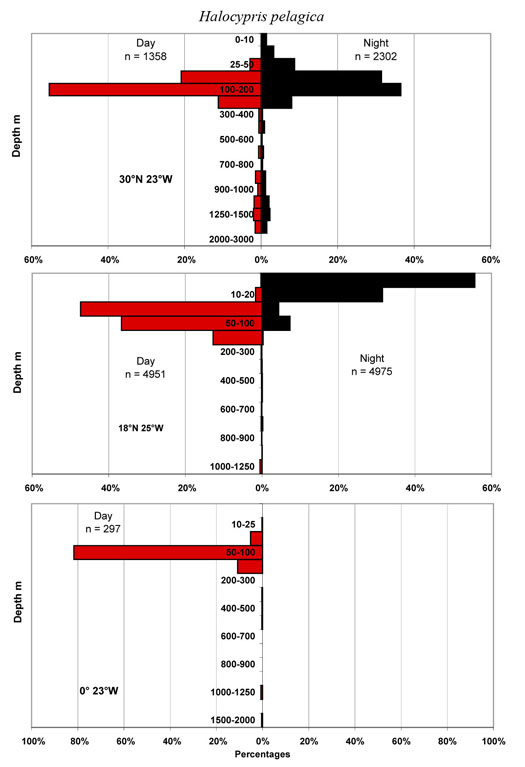Atlas of Atlantic Ostracods
Taxon details
Halocypris pelagica Claus, 1890
- Order:
- MYODOCOPA
- Suborder:
- Halocypridina
- Family:
- Halocyprididae
- Subfamily:
- Halocypridinae
- Size range (females):
- 1.0-1.4 mm
- Size range (males):
- 1.0-1.3 mm
- Depth:
- epi-/mesopelagic
Notes
248 records
Recognizing members of the genus is straightforward, because its species lack a rostrum. However, identifying them to species is of extreme difficulty, and this is reflected in the confusion associated with their systematics. Dana (1852) originally described two species H. inflata and H. brevirostris, which were probably male and female of the same species, but for neither species were the descriptions adequate. Then Claus (1874) described a new species H. concha which is generally considered to have been synonymous with Dana’s ‘species’. Claus (1890) described another species, H. pelagica that was distinguished from the earlier species on the basis of size. Müller (1906) synonymized the two size forms as H. inflata, but Skogsberg (1920) argued that H. brevirostris had precedence over H. inflata. Angel (1982) demonstrated that there were two species in the North Atlantic that co-occurred over limit sectors of their ranges. He argued that H. inflata and H. pelagica were the most appropriate names for the two species. Where the two co-occur not only are they segregated bathymetrically with the larger species inflata occupying slight deeper water, but also the carapace lengths of the juvenile instars become less variable. Angel (1982) suggested these responses might be an example of character displacement and hence be evidence of competition. Recently a new even large species has been recognized in the Pacific, and is being described (Chavtur and Stovbun, in press).
One result of all this confusion is that researchers used either H. brevirostris or H. inflata and have not distinguished the smaller H. pelagica. So the ranges for these two species shown in the maps may be totally unrepresentative. This, the smaller of the two species when it has been distinguished, has been reported over a more limited latitudinal range, 44°N to 36°S. Its bathymetric profiles show that it is most abundant in the vicinity of the thermocline at 50-300m by day and migrates up into the upper 100m at night. There are a further 320 records of ‘brevirostris’ in the literature that cannot be ascribed to species.
| All | n | Mean mm | s.d. | Range mm |
|---|---|---|---|---|
| Female | 127 | 1.23 | 0.073 | 1.04-1.38 |
| Male | 87 | 1.14 | 0.047 | 1.02-1.24 |
| A-1 | 126 | 0.85 | 0.042 | 0.72-0.96 |
| A-2 | 51 | 0.62 | 0.028 | 0.54-0.70 |
| A-3 | 42 | 0.45 | 0.030 | 0.38-0.52 |





